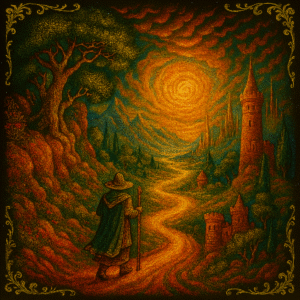 The setting of your novel is as much a character as any of the actors in your story. It drives the action just as they do. It deserves at least as much attention from the writer. Well, I think so.
The setting of your novel is as much a character as any of the actors in your story. It drives the action just as they do. It deserves at least as much attention from the writer. Well, I think so.
The word “setting” covers many things. If you are writing historical; there’s everything to do with period; if you are writing fantasy, you’ll need to establish rules of magic; if it’s SF, there’s technology, and in all cases there will be the consequential effects of your creations on the social norms of your characters.
But what I love most is to imagine landscape.
(The word “landscape” also covers quite a few things: for me, it has included castles, fantastical cities, the surface of an icy moon and, in Muddle and Win, the internal architecture of the human mind. But my current manuscript is set in a medieval forest, and yes, the Forest is very much a character in the story. You bet.)
Landscape, like a good story, should have it wonders. Your landscape should call to the reader. We should want to be in it. When we pass through it for the first time, it should surprise us. Without surprise there is no discovery. There is little to remember. Fingerposts point across open fields. Paths snake towards beckoning groves. The ridgeline hides what lies beyond. What’s going to happen next? Let’s go and see.
Landscape has its rules, even if they are not obvious as we approach. That grove might hide a ruin, but it’s not going to be a volcano. It might hide a waterfall, but we should hear that before you see it. Stories too: the twists and reveals that you put in to keep us urning pages must fit within a set of rules that holds the narrative together. The good storyteller knows how to prepare their reader without giving the game away.
Landscape helps you do that. It can set the mood for a scene, and then change it for the next, just like the musical score in a film. If character A has a dark and twisted secret to reveal to character B, well yes, you could set that scene in a soulless concrete stairwell with strip lighting, but wouldn’t it be better if you described them following a narrow through gloomy thickets with the smell of something rotten in the air? Oh, and the way leads downhill. Of course it does.
